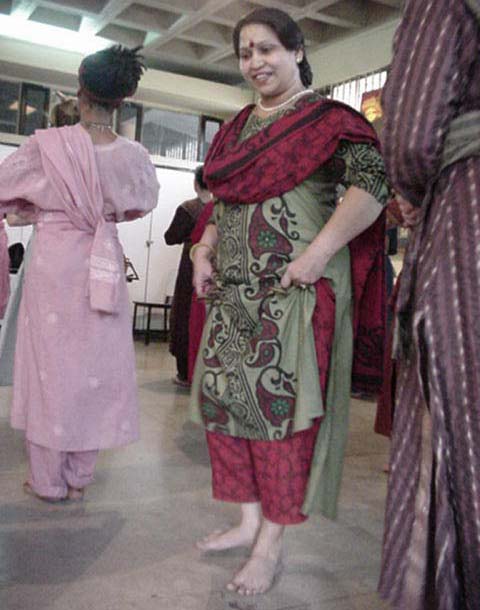 |
Kathak
Dance
Kathak
is prominent classical dance style of Northern India. It's name is derived
from the word 'Katha' meaning story.
From
the literary evidence, it appears that in ancient times, there was a class
of professional story-tellers who recited the epics and mythological stories
with added element of abhinaya i.e. expressional demonstration. These professional
story-tellers were called Kathakas who traveled around the country entertaining
and educating the people with sacred legends, folklores and mythology.
While reciting from the epics etc. they sang, danced and acted. By the
13th century the style of singing by Kathakas had developed its own special
features. During the Bhakti (devotional) movement period in medieval India,
Kathak was greatly influenced by Krishna-cult. During the turmoil period
at the end of moghul rule and reign of Aurangzeb, the Kathak dancers went
back to their village homes in hiding. |
After
decline of Muslim rule and proliferation of small principalities, these
Kathak dancers came out of their villages and some went in search of patronage
under under Nawabs/Muslim rulers and others to Hindu Rajput kings. Lucknow
and Jaipur became two major centres of Kathak patronage.
Thus
two distinct styles i.e. Gharanas of Kathak emerged. One which flourished
under patronage of Muslim rulers of Lucknow came to be known as Lucknow
Gharana and other which flourished under Rajput kings of Jaipur was called
Jaipur Gharana. While Lucknow Gharana was greatly influenced by Muslim
culture and traditions, Jaipur Gharana continued to maintain purity of
Hindu culture. In Lucknow Gharana emphasis is on Salami, Rukhsar Gat, short
Tihais and costume is Kameez, short Angarkha, Chooridar Paijama. In Jaipur
Gharana emphasis is on forceful footwork, Parans, Stutis, Shlokas in praise
of god/goddessess. Costume is long Angarkha, Lehnga, Choli, Chooridar Paijama.
Historical
development of Kathak can be divided into the following three periods:
1.
Ancient or Temple period
2.
Medieval or Court period
3.
Modern or Stage period
Information written
by Guru Urmila Nagar, shown in picture above.
The
Dance and Culture Class studied Kathak dance with Urmilaji for five days.
Normally, Urmilaji would have her students teach dancers as inexperienced
as us. It was a great privilege to have worked with her personally. Mr.
and Mrs. Nagar also invited us into their home on two different occasions
to offer us tea and sweets. We also received an invitation from friends
of Urmilaji to their home after a class for tea and snacks. All invitations
were excepted gratefully and we all enjoyed the visits and treats.
Kathak dancers dance to live music. Urmilaji's son Gopal
played the Pakhawaj , Evergreen student Forest Stone played the Sitar and
Evergreen student John Abrahams played the Tabla. Urmilaji also interspersed
song and playing of the Harmonium throughout instruction.
Return to Educational Home Page
Return to Dance and Culture Home Page
